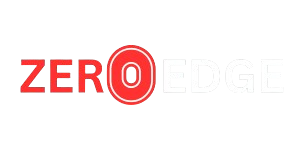In a world characterized by relentless technological innovation, the proliferation of decision-assisting tools has woven them into the fabric of modern life. Among these instruments, Prediction Devices and Telling Devices have emerged as instrumental in shaping how humans engage with data, technology, and their surroundings.
While their functions may occasionally intersect, their core purposes and methodologies set them apart. This article delves into the nuances that distinguish Prediction Devices and Telling Devices
from telling devices, shedding light on their applications, merits, and the philosophical as well as practical ramifications of their use.
Defining Prediction Devices
A prediction device harnesses data to foresee forthcoming occurrences, trends, or possibilities. These devices capitalize on algorithms, artificial intelligence (AI), machine learning, and historical datasets to generate probabilistic insights. They find their greatest utility in contexts riddled with uncertainty, where informed decision-making relies on assessing likely outcomes.

For instance, meteorological forecasting systems epitomize prediction devices. By scrutinizing atmospheric data, they project temperatures, precipitation patterns, and wind dynamics. Similarly, financial analysis platforms utilize historical trends and market conditions to estimate stock price fluctuations.
Key Characteristics of Prediction Devices:
- Data-Centric Analysis: Predictions derive from processing voluminous historical and current datasets.
- Navigating Uncertainty: These devices offer probabilities instead of certainties, empowering users to maneuver through ambiguities.
- Evolving Precision: With continuous exposure to fresh data, their outputs become increasingly refined.
Defining Telling Devices
Conversely, a telling device delivers unequivocal information, instructions, or guidance predicated on established knowledge or predetermined protocols. These tools aim to inform rather than hypothesize, providing users with lucid and actionable insights devoid of probabilities or ambiguity.
A quintessential example is a GPS navigation system, which prescribes optimal routes based on real-time traffic data, road closures, and preloaded maps. Similarly, medical diagnostic equipment that pinpoints an ailment based on symptoms and test results exemplifies a telling device.
Key Characteristics of Telling Devices:
- Definitive Information: They furnish explicit answers or directives without engaging in conjecture.
- Rule-Oriented Mechanism: Their operation hinges on predefined parameters.
- User-Centric Clarity: They prioritize straightforward guidance and concrete knowledge.
Contrasting Prediction and Telling Devices

While prediction and telling devices share the overarching aim of enhancing decision-making, their methodologies and domains of application diverge significantly.
1. Purpose and Functionality
Prediction Devices and Telling Devices are tailored to forecast future eventualities. They excel in scenarios marked by uncertainty, enabling decisions that account for multiple potential trajectories. For example, a corporation might employ a prediction device to gauge market demand for a novel product.
Telling devices, in contrast, are designed to provide unambiguous information in well-defined circumstances. Their strength lies in offering precision and clarity. Users interacting with telling devices anticipate definitive guidance rather than speculative scenarios.
2. Approach to Decision-Making
Prediction devices encourage probabilistic reasoning. By presenting likely scenarios, they empower users to evaluate risks and rewards before acting. For instance, airlines employ predictive analytics to forecast flight delays and adjust schedules proactively.
Telling devices streamline decision-making by supplying direct instructions. A pilot relying on an autopilot system, for example, benefits from clear directives without grappling with probabilities.
3. Data Dependency
Both device types rely on data, albeit differently. Prediction Devices and Telling Devices necessitate dynamic and historical data streams to discern patterns and trends. Machine learning models, for instance, require iterative training with updated datasets.
Telling devices primarily depend on real-time or static data coupled with predefined frameworks. For example, a medical thermometer offers temperature readings without referencing historical data or future projections.
4. Applications Across Sectors
- Healthcare: Prediction Devices and Telling Devices might analyze patient data to estimate the likelihood of developing a chronic illness, while telling devices, such as heart monitors, provide instantaneous readings.
- Finance: Investment tools utilize Prediction Devices and Telling Devices to project market trajectories, whereas telling devices might focus on displaying account balances.
- Transportation: Ride-hailing platforms estimate arrival times through prediction, while dashboard alerts in vehicles serve as telling devices.
Practical Implications
Understanding the distinction between prediction devices and telling devices is imperative for their optimal utilization. Prediction Devices and Telling Devices are indispensable for strategic initiatives, risk assessment, and long-term planning. Meanwhile, telling devices shine in operational environments where accuracy and immediacy take precedence.
Ethical and Philosophical Dimensions
The reliance on both prediction and telling devices prompts ethical considerations surrounding accuracy, dependency, and accountability. Prediction devices, for instance, can perpetuate biases embedded in their datasets, leading to skewed forecasts. It is incumbent upon users to critically assess predictions rather than adopting them uncritically.
Telling devices face challenges regarding their authority and reliability. Erroneous or outdated information can lead to misguided decisions with far-reaching repercussions. Transparency in their operation is vital to maintain user trust.
The Evolving Landscape of Prediction and Telling Devices
Advances in artificial intelligence, machine learning, and data analytics are progressively merging the functionalities of prediction and telling devices. Modern tools often amalgamate both capabilities, offering comprehensive solutions. For instance, virtual assistants like Alexa and Siri utilize predictive algorithms to anticipate user needs while simultaneously providing direct answers.
In conclusion, appreciating the distinction between prediction and telling devices is crucial for leveraging their full potential. Prediction Devices and Telling Devices help navigate uncertainties, while telling devices illuminate well-defined paths. As technology evolves, these tools will continue to redefine decision-making, ensuring it becomes more insightful, efficient, and adaptive.

